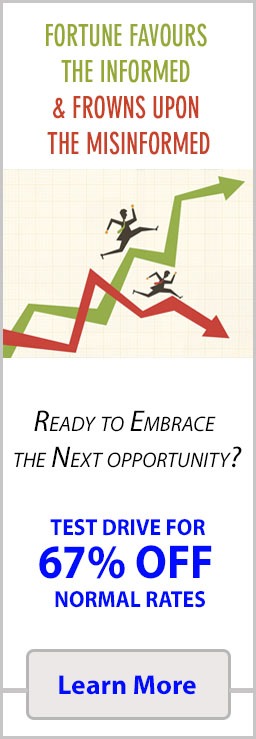
Gambler’s Fallacy: How Bad Logic Wrecks Good Decisions
Updated Aug 19, 2025
Learn how the gambler’s fallacy derails clear thinking—and how to spot this mental trap before it sabotages your financial choices.
Your brain loves patterns, even where none exist. Right now it’s stitching order onto randomness, a survival feature that too easily turns against you in modern markets. That’s the essence of the gambler’s fallacy: the seductive belief that a streak must “balance out,” that you’re somehow “due.” It isn’t poetry, it’s neurology working against you—denial dressed up as logic, quietly steering smart people into costly mistakes.
Also called the Monte Carlo fallacy, this bias spares no one. It whispers that after a run of losses, a win is more likely, that a hot streak can’t last, that the universe keeps score. Those lines don’t just haunt casinos; they underwrite busted portfolios, reckless averaging down, and career-defining errors made with perfect confidence.
Inside the Trap: How the Mind Trips Itself
Think of the mind as a tireless pattern engine. In the wild, that vigilance kept us alive; in a world of independent random events, it creates illusions. The gambler’s fallacy rests on a simple mistake: assuming the past shapes the odds of the next outcome in a truly random sequence. Flip a fair coin five times and land heads each time—on the sixth flip the odds are still 50/50. The coin has no memory, no quota to fill, no cosmic need to even things out.
This isn’t a classroom curiosity. It’s a repeat offender in blown accounts and broken plans. Worse, intelligence can magnify the damage: the sharper the mind, the more ornate the rationalizations it can build to justify the error.
The Monte Carlo Lesson: When Savvy Players Abandoned Math
August 18, 1913, in Monte Carlo: a roulette wheel landed on black 26 times in a row—an occurrence with odds on the order of one in 136 million. The spectacle wasn’t the streak, it was the reaction. Players lost fortunes shoving chips onto red, convinced each spin made red “inevitable.”
These weren’t naïfs. Many understood probability in theory, then abandoned it under pressure. In reality, every spin preserved roughly a 48.6% chance of red on a single-zero wheel. The wheel kept no ledger, owed no “payback,” recognized no imbalance. Yet bright minds insisted the laws of chance would flex to their expectations. They didn’t lose to the wheel; they lost to the story in their heads.
Beyond the Casino: Where Logic Goes to Die
The Gambler’s Fallacy doesn’t confine itself to gambling halls. It infiltrates every domain where humans encounter uncertainty, which is to say, everywhere that matters.
In the delivery room, a couple with three sons become convinced their fourth child is “due” to be a daughter. Biology doesn’t negotiate; each pregnancy carries roughly the same gender probability regardless of sibling composition.
In professional sports, coaches and fans fall victim to both sides of this cognitive coin. The “hot hand” fallacy convinces them that a player’s recent success predicts future performance, while the opposing belief suggests that a winning streak is “due” to end. Both perspectives ignore the complex reality that athletic performance involves skill, luck, conditioning, and countless variables that don’t follow simple probability models .
In weather expectations, people anticipate harsh winters after mild ones or expect rain after extended dry spells, as if nature operates on a cosmic balance sheet. Meteorology involves complex systems, not simple probability sequences.
The Professional’s Paradox: When Expertise Becomes Vulnerability
Perhaps most disturbing is research revealing that even trained professionals fall victim to this fallacy. Asylum judges show subtle biases toward denying cases after approving previous ones. Baseball umpires unconsciously avoid calling consecutive strikes. Loan officers demonstrate negative autocorrelation in their approval decisions.
These findings shatter the comfortable illusion that education and experience provide immunity from cognitive bias. Instead, they reveal a harder truth: expertise can become a double-edged sword, providing the knowledge to recognise patterns while simultaneously creating overconfidence in our ability to predict randomness.
Financial Carnage: When Markets Become Casinos
In the investment world, the Gambler’s Fallacy transforms disciplined traders into desperate gamblers and prudent investors into panic-driven sellers.
Consider the investor who watches a stock decline for five consecutive days. The fallacy whispers, “It’s due for a bounce.” Ignore fundamental analysis, earnings reports, or market conditions—the stock has fallen enough; probability demands a reversal. This thinking transforms investment accounts into slot machines, where previous losses somehow guarantee future wins.
Conversely, an investor watching a stock soar might sell prematurely, convinced that “what goes up must come down” and that recent gains make future appreciation less likely. This premature profit-taking can cost investors massive returns in genuine growth stories.
The options market particularly amplifies this destruction. Traders suffering losses often increase their position sizes, believing that their “cold streak” must end. They chase previous losses with larger bets, creating a downward spiral where mathematical reality collides with psychological desperation.
The Lightning Strike Lie and Other Everyday Deceptions
The phrase “lightning never strikes twice” exemplifies how the Gambler’s Fallacy infiltrates common wisdom. Lightning absolutely can and does strike the same location repeatedly—tall structures and good conductors remain attractive targets regardless of previous strikes. The Empire State Building gets hit by lightning approximately 100 times per year.
This linguistic artefact reveals how deeply this fallacy penetrates our collective consciousness. We’ve codified randomness misconceptions into sayings that sound wise but promote dangerous thinking.
In business contexts, this manifests as executives avoiding successful strategies. They worked “too well” recently, or doubled down on failed approaches because they’re “due” for success. Strategic planning becomes superstition, and data-driven decisions become emotional reactions to perceived patterns in noise.
The Neurological Trap: Why Smart Brains Make Dumb Bets
Recent neuroscience research reveals why the Gambler’s Fallacy persists and proves so destructive. Our brains process random sequences through pattern-recognition systems that evolved for non-random environments. When these systems encounter true randomness, they don’t shut down—they generate false patterns and treat them as real information.
This creates a particularly insidious form of self-deception. The brain doesn’t simply fail to recognise randomness; it actively constructs meaning from meaninglessness and generates confidence in these fabricated patterns. The result is decisions that feel rational and well-reasoned but are actually based on neurological hallucinations.
Understanding this mechanism is crucial because it explains why intelligent, educated individuals consistently fall victim to the fallacy. They’re not being stupid or careless—they’re being human. Their brains are functioning exactly as designed, just in an environment for which they weren’t optimised.
Breaking Free: Mental Techniques for Probability Mastery
Recognition is the first step toward liberation. When facing decisions involving uncertainty, ask yourself: “Are these events truly independent?” If the answer is yes, then previous outcomes provide zero information about future probabilities.
Develop what we call “probability anchoring”—consciously remind yourself of the actual odds before making decisions. A fair coin remains 50/50 regardless of previous flips. A lottery ticket maintains the same minuscule winning odds regardless of last week’s numbers.
In financial contexts, separate systematic analysis from random variation. A stock’s fundamental value may justify buying despite recent gains, or justify selling despite recent losses. Market movements often contain both systematic trends and random noise—learning to distinguish between them is crucial for investment success.
Create decision-making protocols that force you to articulate your reasoning. Write down why you’re making a particular choice, focusing on objective factors rather than recent patterns or “gut feelings” about being “due” for certain outcomes.
The Liberation of Logical Clarity
Breaking free from the Gambler’s Fallacy isn’t just about avoiding financial losses or gambling disasters—it’s about reclaiming your mental sovereignty. When you understand that randomness has no memory and no agenda, you stop wasting emotional energy trying to predict the unpredictable.
This clarity extends beyond financial decisions into every domain involving uncertainty. You make better hiring decisions, avoid relationship traps based on false patterns, and approach life’s inevitable uncertainties with rational confidence rather than superstitious anxiety.
The ultimate irony? By accepting randomness, you become better at recognising genuine patterns when they actually exist. Your pattern-recognition abilities sharpen because false signals and fabricated trends no longer cloud them.
Master this principle, and you join the ranks of those who profit from others’ cognitive blind spots rather than falling victim to them. In a world where most people’s brains work against them, logical clarity becomes a massive competitive advantage.
Ready to weaponise your understanding of market psychology and cognitive biases? Get our free guide on investor psychology and sign up for our newsletter to receive cutting-edge insights on how mass psychology drives market movements. Stop being a victim of your own cognitive biases—start exploiting others’ instead.











I dont believe it .